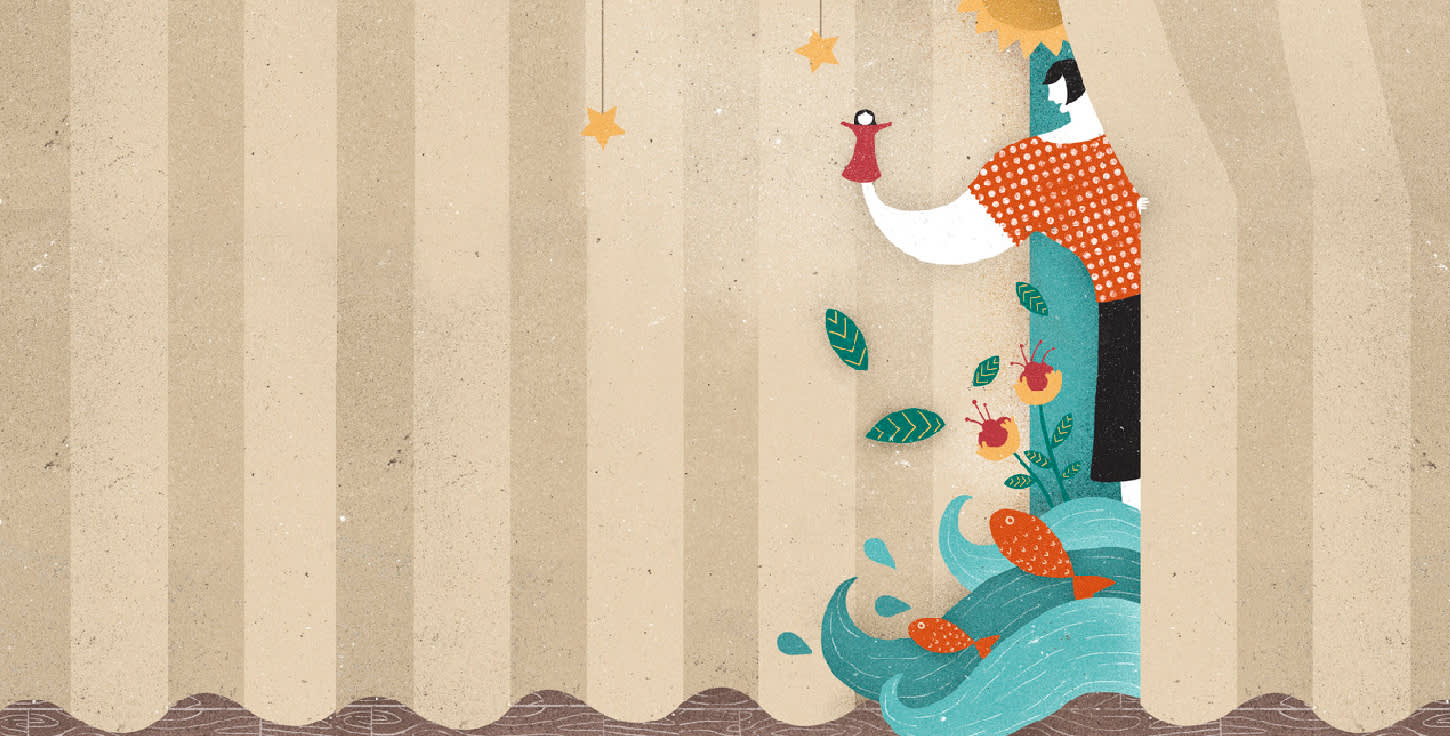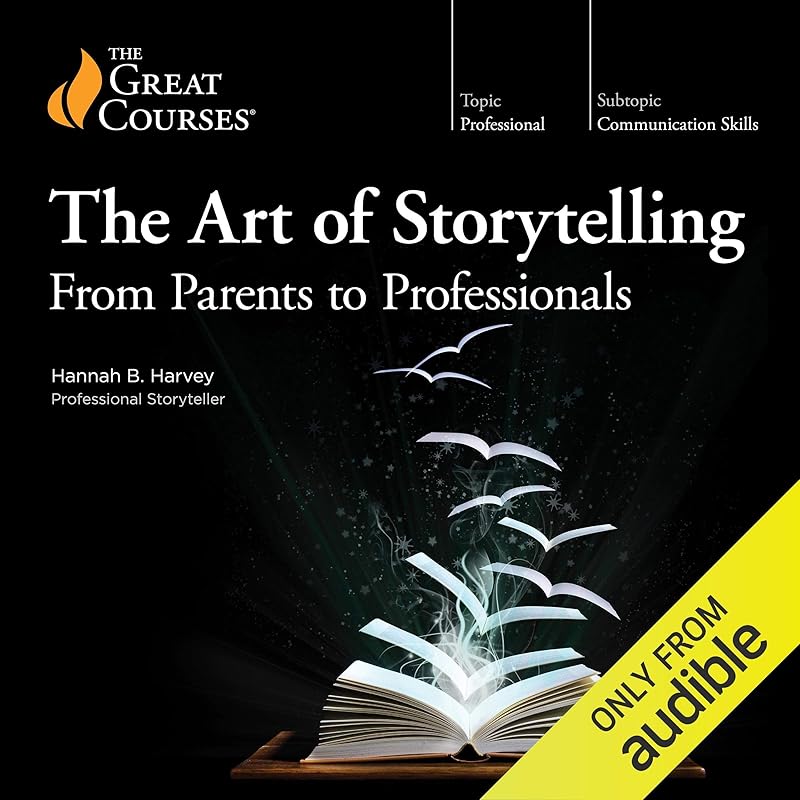Ernest Holliday never expected to be in front of 400 people talking about how his hamsters, Melvin and Rufus, died only a day after he’d gotten them for his ninth birthday. A senior at Brooklyn High School of the Arts, he’d been focused on visual art for his first three years, and it was his first time performing onstage.
“A lot of things were going through my head. I thought, what if they don’t think it’s funny? What if they don’t get it?” he says. “But once I got to the mic, I felt so comfortable — like I’d been doing it all my life.”
His newfound confidence in public speaking (but also, he says, in himself) was the result of an impromptu decision. His friend had signed up for an afterschool program put on by The Moth, a New York-based organization for storytellers that produces live events and a weekly public radio show. Holliday needed something to do, so he signed up for the event, called StorySLAM, too. At the end of the year, he was invited to participate in the Moth’s High School GrandSLAM in front of hundreds.
“It ended up being the best decision I made,” he says. The former visual artist is now a freshman at Borough of Manhattan Community College and plans to pursue a theater degree to embrace his new love of performing.
Holliday got a chance to bring his stories to light, but most kids won’t be so lucky. While storytelling is having its moment in popular media, the trend has yet to catch on in classrooms and within families. Experts say this should change. Storytelling, they say, can help children boost their confidence, develop empathy, and even deal with trauma.
Jane Stenson, co-chair of the Youth Educators and Storytellers Alliance, has written widely on the importance of storytelling in education and hosts professional development programs for teachers hoping to integrate the art form in their teaching. Although she says studies have shown its benefits in early childhood education, storytelling has not been as widely incorporated into the classroom as it should be. While the Common Core standards, which have been adopted by almost every state, make no mention of it, Stenson says teachers can integrate it into the classroom under broader English Language Arts standards that cover speaking and listening. Parents, she adds, should also integrate the practice at home as part of early childhood development, either by telling traditional folktales or personal stories.
“They see their young person understanding an older adult in their family in a way they never could before.”
“Folktales give us an opportunity to show kids that there is a path through the forest we call the world,” she says, adding that parents can often relate personally to folktales and integrate their own stories of overcoming obstacles. “The story gives them the courage to keep going — it gives them hope.”
Connie McIntyre is co-founder of The Grannie Annie, an organization that asks children to interview family elders and tell their family stories in written form. They take submissions from all over the country, and selected stories go into published volumes each year. McIntyre says families have found such meaning in the process that they travel from all over the country to attend their annual festival in St. Louis.
“What we hear time and again from parents is that they see their young person understanding an older adult in their family in a way they never could before,” she says. In addition to this new empathy, she says it also allows children to use past family struggles to boost their own confidence. “They see this person had a challenge — often a life-or-death challenge — and they did not just survive, but used it to power them[selves] moving forward.”
One student, Chava Deutscher, wrote about her great-grandfather’s experience in a German concentration camp during World War II. An older man he’d stayed with had refused to give up on his faith, despite harsh treatment from the Nazi guards. Her great-grandfather passed the story down to her.
“All of a sudden, Mr. Goldshtoff looked the Nazi in the eye and answered, “No. [God] has not forsaken us. Nisht totalla un nisht uf aiybick [sic]. Not totally and not forever,” Chava wrote, including a translation from the Yiddish. ”This is the legacy that my great-grandfather left me.”
McIntyre calls the breadth of topics families have submitted “mind-boggling” and says it allows people from all over the country to relate to each other in deep, empathetic ways.
“It’s so uncanny how reading these very simple family stories can cause a person to identify with the story so deeply that it’s almost as if it’s their own family,” she says. “They really get at the core of what it means to be human.”

Laurel Kiser, an associate professor of psychiatry at the University of Maryland, has integrated storytelling into her practice with families who have experienced trauma. Over 15 weeks, patients begin slowly, telling happy stories about their families before going deeper, gradually building up to telling the story of the trauma.
“Families that are having problems communicating or are stuck communicating only about negative and traumatic things can use storytelling to refocus their understanding of their own family narrative,” she says. The gradual process allows patients to establish trust before dealing with the trauma that brought them to therapy.
Families spend time with trained clinicians talking about what the storytelling process will look like and how all members can participate, regardless of age. Parents might be cued to help children tease out specific details, such as sorting out the sequence of events or describing feelings. “It’s a process of really scaffolding storytelling for the kids, but it’s also about how to work with kids to develop narrative skills and the skills they need to talk about emotion,” she says, adding that younger children also gain necessary listening skills by allowing others to tell their stories, and engaging in conversations about them afterward.
“They say they don’t believe they have stories. The implicit message they are getting back is ‘I am not important."
Martha Hamilton and Mitch Weiss of Beauty and the Beast Storytellers have seen firsthand the impact telling stories can have on children. The husband-and-wife team has been teaching storytelling to younger elementary students for 35 years using fairytales and folktales, and they say that the process of pushing kids out of their comfort zone allows them to care for one another in ways they may not have before.
Weiss recalls one moving moment during a recent visit with second graders in Rochester, N.Y. When a girl who was new to English stood up to tell a story, “all the kids cheered and came up and hugged her,” he says. “It was so sweet.”
“Part of the empathy is that they now know each of the kids has something to give. They see that everyone is nervous, but they also see the strengths,” adds Hamilton.
The same is true for older children. Lauren Kalogridis is the education manager at StoryCorpsU, which trains teachers how to integrate storytelling into ninth- and 10th-grade classrooms. Throughout the school year, teachers work in questions that ask students to think deeply about themselves. Students then tell stories in confessional form and record themselves. She says young people often struggle with what stories to tell.
“They say they don’t believe they have stories. The implicit message they are getting back is ‘I am not important,’” she says. StoryCorpsU attempts to change this mindset by making classrooms a welcoming and constructive place to tell stories.
“If you reveal yourself, and you are vulnerable, it’s a risk,” Kalogridis says. “But in that moment of sharing they can have it validated and hear their teachers and peers saying, ‘I hear you, thank you. That was brave.’”
Students who participate in the program find the strength to reveal very personal and often painful life circumstances. One student, Amanda, spoke of her issues with extreme anxiety. She went from being unable to give presentations to being featured on the StoryCorpsU website.
“You just can’t breathe, your heart starts to race, and all you want to do is lay down and cry,” said the student at Methuen High School in Methuen, Mass., during the 2014 school year. “It gets really scary because I don’t want anybody else to see that part of me, I guess. I don’t tell anyone.”
“[Traditional folktales] give children alternative narratives aside from the mainstream narratives around which their identities are shaped.”
But not all storytelling must be personal, original stories. Experts say using traditional folktales in storytelling activities allows students to dive deep into their own cultures, creating a heightened sense of identity, and pushes students to better understand cultures that aren’t their own.
Nina Jaffe is a professor at the Bank Street Graduate School of Education in New York City and a professional storyteller who trains teachers to weave storytelling into the classroom. She recalls telling a version of the classic Puerto Rican folktale “Sing, Little Sack” at a school in Greenwich Village, where there were no Puerto Rican children present.
“Puerto Rico became a real place for them. It had literature, it had an identity,” she says, adding that the process is equally valuable for children who do have a common culture with the story. When she read the same book in East Harlem, the children would start singing the song in the folktale along with her, laughing and telling stories about how their grandma would sing that song to them.
For parents and teachers interested in adding folktales to their child’s education, she recommends starting at the local public library, where librarians can help them connect to books that are the best fit. Additionally, Scholastic’s robust program offers lesson plans for parents, with age-specific myths, fairy tales, and folktales they can use as a jumping-off point for cultural discussions.
“[Traditional folktales] give children alternative narratives aside from the mainstream narratives around which their identities are shaped,” she says, adding that “making connections to your own cultural identity” gives kids a greater sense of self and allows them to be confident in who they are.







